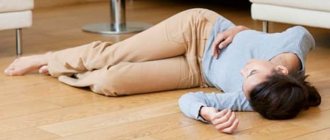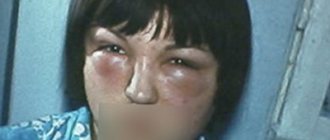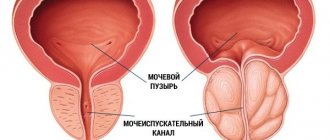If you start talking about the main problems of young children, you will definitely mention diaper rash. And almost immediately you can get a lot of advice on their prevention and treatment. But often this disease also affects adults.
Diaper rash is a disease characterized by inflammation in the skin folds. Inflammation occurs as a result of excessive sweating, poor or poor hygiene, and prolonged rubbing of the skin by clothing or other objects. Allergies, excess weight, and decreased immunity also contribute to the development of diaper rash.
Of course, people who have limited physical activity are most susceptible to diaper rash: after a stroke, accidents, those suffering from cerebral palsy, those in the intensive care unit, and so on.
But an inactive lifestyle, obesity, frequent visits to the pool (chlorinated water) and sensitive skin can contribute to the development of diaper rash. Most often, the groin folds, armpits, buttocks, between the fingers, behind the ears, and in folds formed as a result of obesity are affected. In women, it is often under the mammary glands.
What does diaper rash look like in babies?
Experts distinguish three degrees of diaper rash in newborns.
1st degree.
The initial stage of diaper rash in children is characterized by slight redness. Such diaper rash most often occurs in the folds of the skin. Usually the child will not pay attention to this minor discomfort, but parents should take the symptoms very seriously. As a rule, getting rid of diaper rash in newborns at the first stage is quite simple, but if you miss the moment, it will be more difficult later.
2nd degree.
At the next stage, the baby develops severe diaper rash - its color becomes more intense, and damage to the surface layer of the skin (erosion) appears. Diaper rash of the second degree causes anxiety in the baby. He may reach out with his hands and react nervously when touching sore areas, for example, when changing a diaper. This stage already requires special means, but before treating diaper rash in infants, parents should definitely consult a doctor.
3rd degree.
Bright redness, intense erosion, wet cracks in the skin, ulcers and small ulcers - this is what diaper rash looks like in a newborn at the most serious stage. The child feels constant itching, and this affects his behavior. The baby's sleep and appetite worsen, he is often capricious and cries. Such severe diaper rash in a newborn requires immediate consultation with a doctor and starting treatment as quickly as possible.
We hope our description helped you understand. But if you wish, you can find diaper rash in girls and boys in photos on the Internet and see what this disease looks like at different stages.
Bedsores
Bedsores are formed as a result of constant compression of soft tissues. Simply put, when a person lies in one position for a long time, some parts of the body are constantly compressed. Blood circulation and nutrition are disrupted, soft tissues begin to slowly die. This is called soft tissue necrosis.
Important The process of bedsore formation “starts” after just two hours of body immobility!
Bedsores are characterized by a change in skin color with clear boundaries, swelling, and weeping wounds. If they are not treated promptly, the volume and depth of the lesions rapidly increase. Most often, bedsores occur on the heels, knees, elbows, tailbone, and buttocks. It depends on what position the person predominantly lies in.
There are 4 stages of development of bedsores .
Stage 1. Fading redness
What does it look like:
A pale area of skin or, conversely, persistent redness. The skin is not damaged. If you press your finger into the center of the redness area, the skin will turn pale. This suggests that microcirculation is not impaired.
Stage 1 bedsore on the back. Photo: CPP
Stage 1 bedsore. Photo: ECDO Center
To be sick, but to smile is the norm. Alexey Vasikov, director of the Blacksmith Lobov House of Mercy, about what “norm” means for a seriously ill person and why it sometimes surprises us
Alexey Vasikov
About palliative care
How to treat
It is important to prevent the process of bedsore formation from developing further. Make sure that the person does not lie on the injured area, use protective film breathable bandages (like a “second skin”).
By the way, in this article we describe in detail what types of dressings there are and in what cases what to use.
You can lightly massage healthy skin around the redness area - stroke it clockwise. It is permissible to use activating agents for massage. They improve blood microcirculation in tissues, which leads to improved metabolic processes in tissues, and therefore to an improvement in their condition and increased resistance to negative factors.
These products include special creams and gels with camphor or guarana. But remember, under no circumstances should you use camphor alcohol.
and similar means.
This article will help you understand the variety of foams, dry shampoos, creams and lotions for hygiene, including in special cases - bedsores, stoma, urinary and fecal incontinence.
Stage 2. Non-fading redness
What it looks like: Skin color - bluish-red, spots with clear edges; skin with superficial damage - abrasions, blisters. Usually already accompanied by pain.
Stage 1 bedsore. Photo: Palliative Care Center, Moscow
Stage 2 bedsore. Photo: Palliative Care Center, Moscow
How to deal with unpleasant odors in the home of a seriously ill person Why do unpleasant odors form, is there a specific “smell of old age” and how to deal with this problem
Kristina Osotova
Care
How to treat
It is necessary to prevent the wound from becoming infected. It should be rinsed with sterile saline at room temperature, and then a transparent semi-permeable film, hydrocolloid or foam dressing should be applied. To prevent the formation of bedsores from developing further, follow all anti-bedsore procedures.
Stage 3. Damage to the skin up to the muscle layer or with penetration into the muscles
What it looks like: The edges of the wound are well demarcated, surrounded by swelling and redness; the inside of the wound may be yellow or red. This is necrosis (tissue death) or granulation (tissue growth around). There may be liquid discharge. Hurts a lot.
Stage 2 bedsore. Photo: Palliative Care Center, Moscow
Stage 3 bedsore. Photo: Palliative Care Center, Moscow
Video: Treatment of deep bedsoresWhat to do and how to care if a person has deep bedsores and you do not have the opportunity to see a doctor
Irina ProkopenkoCaring workshop
Care
How to treat
Stage 3 bedsores should only be treated by a doctor. It will cleanse the wound of exudate (liquid that is released from small blood vessels during inflammation) and pus. He will remove necrotic (dead) tissue surgically or dissolve necrosis using special gel dressings, and wash the wounds with saline solution. For secondary infection and purulent discharge, he will prescribe antibacterial agents (for example, metronidazole).
It is important to ensure the absorption of discharge and protect the wound from drying out and infection. For this, atraumatic bactericidal and absorbent dressings are used: based on beeswax with bactericidal properties, hydrogel, based on calcium alginate. They may also have a hemostatic effect.
After cleansing the wound, you need to stimulate its healing process. And, of course, continue all necessary anti-bedsore procedures.
Stage 4. Damage to all soft tissues, tendons and bones visible
What it looks like : Many holes are formed that can connect. The bottom of the wound often fills with black or black-brown masses of decaying tissue. Very strong, unbearable pain.
Stage 4 bedsore. Photo: Palliative Care Center, Moscow
Last stage bedsore, tissue necrosis. Photo: ECDO Center
How to treat
Such bedsores can also only be treated by a doctor. It does the same thing as stage 3 pressure ulcers, plus adds prophylaxis and bleeding control if necessary. For this purpose, atraumatic dressings are used and locally - a solution of ethamsylate and aminocaproic acid, calcium alginate.
Important Sometimes bedsores form in very unexpected places - for example, on the head. Read about this in the article “Bedsores on the head: prevention and treatment.”
Bedsores. Test for those caring for seriously ill people Do you know enough about caring for a sedentary person? Test your knowledge. Caring workshop
Symptomatic treatment
Why do diaper rash occur in children?
To understand how to get rid of diaper rash, you first need to understand why it occurs. Indeed, at the first stage, it is often enough to simply remove the irritants so that the baby’s diaper rash disappears.
Moisture
Moisture is the main cause of diaper rash in a newborn. In an effort to protect their baby from colds, parents often overheat the room or wrap the baby too tightly, causing the baby to sweat. Diaper rash from sweat in newborns primarily appears in the armpits, skin folds and other places of increased sweating.
Regular water procedures wash away body secretions and a significant amount of bacteria from the skin. However, what helps with diaper rash in newborns can also cause it. Water remaining on the skin after bathing is another source of excess moisture. To prevent it from getting under clothes, it is recommended to dry the baby thoroughly and let his body breathe for 10–15 minutes before dressing.
And, of course, diaper rash in newborns can appear from moisture from diapers. Pay attention to your baby's signals and carry out hygiene procedures in a timely manner. Remember: diapers can reduce the risk of diaper rash on the bottom of newborns, but only if they are changed regularly.
Friction
Diaper rash can occur due to mechanical stress on the skin. To prevent this from happening, do not swaddle your baby too tightly, do not put tight clothes on him, and avoid synthetic fabrics. Due to friction, diaper rash can also appear under the diaper belt of a newborn. This usually happens if the belt is too tight, or diapers of dubious quality were purchased.
Chemical irritants
Another reason why a newborn baby may develop diaper rash is the baby's sensitivity to certain chemicals. They can get on the skin from clothes, diapers, and cosmetics. What helps against “chemical” diaper rash in newborns? The answer is simple: buy products for your child only from manufacturers in which you are 100% confident.
Other factors
There are a number of factors that can increase the risk of this disease - excess weight, a tendency to allergies, the location of blood vessels close to the surface of the skin. There is also a gender dependence: diaper rash occurs more often in newborn girls than in boys.
Development and symptoms
The disease itself develops very quickly, literally in a couple of hours. The sweat and sebaceous glands produce a secretion that has an irritating effect. And increased temperature and humidity in the folds of the body create favorable conditions for further pathological process.
If the disease is ignored, fungal, viral and bacterial infections may occur, which will require longer and more labor-intensive treatment.
At the very beginning, diaper rash appears as slight redness in the skin folds; there may be signs of maceration or small cracks in the skin. But as it progresses, erosions may appear, which over time become covered with a dark gray coating. Itching, burning and pain are added, due to which the patients' movements become more limited.
According to their course, diaper rash can be acute or chronic. And there are three stages of the disease:
- redness appears, but the integrity of the skin is not compromised;
- erosion appears;
- The affected area increases, the course itself is aggravated by the appearance of cracks and crusts.
Where do diaper rashes usually form? Under a diaper?
Problems usually appear in the folds of the skin, i.e. in places where moisture evaporation is difficult. The most comfortable place for diaper rash in a newborn is between the legs - in the groin area and between the buttocks, under the armpits. Also, diaper rash in a baby can form on the neck and between the toes.
As you can see, this disease manifests itself not only on the butt in a diaper. It can pop up unexpectedly anywhere. Diaper rash can even occur behind the ears, especially in newborns whose parents wear hats that are too thick and tight.
Traditional methods of treating diaper rash.
You can treat manifestations of dermatitis in elderly women using an iodine solution: 1 drop of iodine per 200 grams of water. The affected skin is washed with this solution, then wiped with a soft cloth to dry. After using this method, it is not advisable to immediately put on clothes - you need to wait at least 10-15 minutes.
When using these methods, it is necessary to take into account concomitant diseases (Alzheimer's disease, Parkinson's disease, dementia, etc.) so as not to cause harm.
It is also necessary to do lotions on a regular basis. Eucalyptus is great for this. After preparing two tablespoons of eucalyptus leaves, place them in 200 ml. water and heat in a water bath for 7 minutes. Then wet a cotton napkin with this decoction and apply it to the damaged area for 15-20 minutes.
Are prickly heat and diaper rash in newborns the same thing?
No, these are different diseases. Diaper rash in newborns occurs due to various reasons, and prickly heat, as the name suggests, is only caused by excessive sweating. At the initial stage, prickly heat manifests itself in a similar way - as slight redness of the skin, but then develops into small blisters with clear or cloudy contents.
For a better understanding, find a photo of prickly heat and, for example, diaper rash on a newborn’s bottom - as you will see, they look completely different.
The good news is that there is no need to treat heat rash, you just need to eliminate its causes - overheating of the baby and clogged pores. Traditional methods of preventing diaper rash in newborns, including maintaining the correct temperature in the room, water and air baths, usually eliminate miliaria.
Methods for treating diaper rash.
Treatment of diaper rash in elderly people can be carried out using both medications and folk remedies.
Healthcare providers recommend prioritizing the use of pharmacological agents that can treat the underlying cause of intertriginous dermatitis.
One of the methods of treating diaper rash in an elderly person is the use of manganese. Having made a weak solution of manganese with water, you need to use it to wipe the affected skin.
At this time, there are some difficulties with purchasing potassium permanganate; in this case, furatsilin can be used instead . Furacilin is an antimicrobial drug and is intended for external use. This drug is sold in two forms: solution and tablets. To treat diaper rash, it would be better to choose a liquid solution of furatsilin, this is the most convenient option for use. The duration of such treatment is from 5 to 7 days.
The most suitable for the treatment of dermatitis, which manifests itself in women in the form of diaper rash under the mammary glands, are lotions made from a solution of copper sulfates or a solution of zinc.
Specialists at the private home for the elderly "Edem" in Moscow and the Moscow region use only proven means for the prevention and treatment of diaper rash.
How to avoid diaper rash?
Many diseases are easier to prevent than to cure, and diaper rash in a newborn is no exception. What to do to protect your baby from this scourge? Nothing complicated!
- Avoid situations where your child sweats:
- Monitor the temperature in the room. It is advisable that the thermometer does not rise above 18–20 degrees. This will significantly increase the chances of both avoiding diaper rash and protecting the baby from prickly heat.
- Refuse synthetics in favor of natural fabrics (cotton, linen).
- Try not to wrap your baby up.
- Minimize the risk of friction:
- Do not put tight clothes on your child.
- Avoid rough fabrics.
- Follow the rules of hygiene:
- Bathe your baby daily.
- Treat skin folds with protective cream or baby oil. Pay special attention to problem areas - under the arms, on the neck, in the groin, between the buttocks.
- After bathing, dry your baby's body with a towel, but do not rub him. In addition to regular textile towels, you can also use paper towels.
- To avoid diaper rash, use only products from reputable manufacturers.
- Change diapers regularly and do not forget about the benefits of air baths lasting about 10-15 minutes.
Ointments for diaper rash
Using specialized ointments is a very effective way to combat skin rashes.
- "Zinc ointment". This pharmacological agent is excellent for the treatment of diaper rash. It dries and softens the skin, thereby helping to reduce fluid discharge from wounds.
- "Bepanten." It is a very common remedy for rashes. This pharmacological drug accelerates wound healing. This product is available in the form of cream and ointment.
- "Nystatin" This is an antibiotic that comes in the form of an ointment. It is recommended by many dermatologists. It has an antifungal effect and delays the development of infectious fungi.
- "Salicylic ointment." This drug quickly relieves skin redness and inflammatory processes.
- "Salicylic-zinc paste." It was recognized by doctors as a very effective remedy. It helps dry wounds, eliminates redness, and helps exfoliate dead tissue.
Pathogenesis
In the development of diaper rash, increased sweating and friction of the skin, which cause inflammation, are of primary importance. In addition, a higher temperature is created in closed folds of the skin compared to open and ventilated areas of the body. Accumulation of sweat and friction under elevated temperature conditions increase maceration (damage) of the skin. Fungi and bacteria contained on the skin actively multiply and lead to the development of skin infections. A decrease in skin protective factors and the presence of damage create conditions for pathogens to penetrate into the deep layers of the epidermis. Thus, dermatophytes (a type of fungus) have a keratolytic effect - they destroy the keratin of the stratum corneum, causing a pronounced and long-lasting inflammatory process.
Complications, prognosis and diagnosis of the disease
The prognosis for intertrigo is generally favorable. Ulcerations, cellulitis and sepsis occur mainly in patients with diabetes mellitus, obesity and HIV-infected people.
Diagnosis of the disease is based on data. obtained during examination of the patient and medical history. If necessary, methods of microscopy and culture of biological material are used to identify pathogens.
To prescribe adequate treatment, intertrigo should be distinguished from diseases such as psoriasis and atopic dermatitis.










